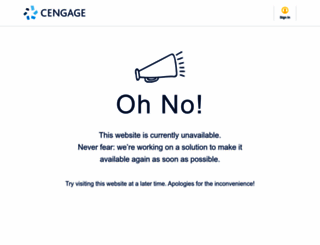Higher Ed eBooks & Digital Learning Solutions - Cengage
Page Load Speed
1.5 sec in total
First Response
117 ms
Resources Loaded
1.1 sec
Page Rendered
313 ms

About Website
Visit course.com now to see the best up-to-date Course content for Hong Kong and also check out these interesting facts you probably never knew about course.com
Cengage digital learning solutions, Higher Ed eBooks, courses, resources & services, craft learning experiences to propel students toward a brighter future.
Visit course.comKey Findings
We analyzed Course.com page load time and found that the first response time was 117 ms and then it took 1.4 sec to load all DOM resources and completely render a web page. This is quite a good result, as only 25% of websites can load faster.